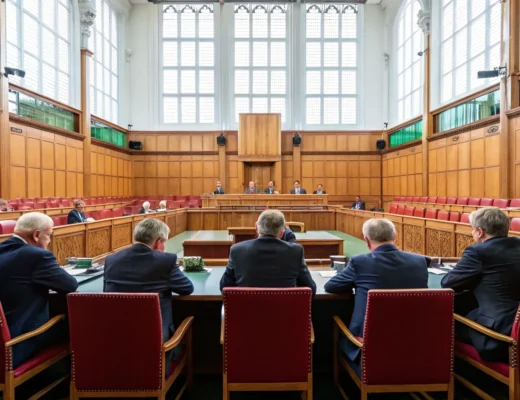Financial analysts are positioning themselves against a recent market downgrade, fulfilling a commitment made in previous market guidance. This contrarian stance represents a significant shift in market sentiment as experts reassess valuation metrics and growth prospects.
The decision to take “the other side of a downgrade” suggests that some market participants believe the recent negative assessment may be overstated or fails to account for underlying strengths in the downgraded asset or sector. By following through on an “earlier pledge,” these analysts are demonstrating consistency in their market outlook despite changing conditions.
Market Contrarians Challenge Consensus
The move against the downgrade comes at a time when market consensus has turned increasingly bearish on certain sectors. Financial experts who oppose the downgrade are basing their position on alternative data points and valuation models that suggest greater resilience than widely acknowledged.
This contrarian approach is not without precedent in financial markets. Historically, some of the most profitable investment decisions have come from positions that initially opposed mainstream market sentiment. The current situation follows this pattern, with analysts willing to stake their reputation on a more optimistic outlook.
The fulfilled “pledge” indicates this position was telegraphed to investors previously, suggesting a deliberate strategy rather than a reactive response to market movements.
Implications for Investors
For retail and institutional investors, this divergence in professional opinion creates both opportunity and confusion. The opposing viewpoints highlight the complexity of current market conditions and the difficulty in establishing consensus valuations.
Investors now face several considerations:
- Whether the original downgrade was based on short-term factors, while the contrarian view takes a longer-term perspective
- The track record of both the downgrading entity and those taking the opposite position
- Underlying fundamentals that might support either the bearish or bullish case
Market participants will likely watch for additional data points to determine which assessment proves more accurate. Trading volumes may increase as investors reposition based on these competing viewpoints.
Strategic Commitment in Volatile Markets
The reference to making good on an “earlier pledge” suggests a strategic commitment that transcends short-term market volatility. This approach reflects a growing trend among financial analysts to establish and maintain consistent positions despite market fluctuations.
Such commitment can enhance credibility when proven correct, but also carries significant reputational risk if market movements ultimately validate the downgrade instead. The willingness to take this position publicly indicates strong conviction in the contrarian assessment.
Financial markets have recently experienced heightened volatility, making firm positions increasingly rare. This decisive stance against prevailing sentiment therefore stands out as particularly noteworthy in the current environment.
As markets digest these competing viewpoints, price discovery mechanisms will ultimately determine which assessment more accurately reflects underlying economic conditions. For now, the split in professional opinion creates a market dynamic worth monitoring as it unfolds in coming trading sessions.







